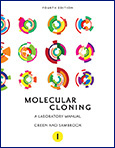Positional Information and Stem Cells Combine to Result in Planarian Regeneration
- 1Whitehead Institute for Biomedical Research, Cambridge, Massachusetts 02142, USA
- 2Department of Biology, MIT, Cambridge, Massachusetts 02139, USA
- 3Howard Hughes Medical Institute, MIT, Cambridge, Massachusetts 02139, USA
- Correspondence: reddien{at}wi.mit.edu
Abstract
The capacity for regeneration is broad in the animal kingdom. Planarians are flatworms that can regenerate any missing body part and their regenerative powers have combined with ease of experimentation to make them a classic regeneration model for more than a century. Pluripotent stem cells called neoblasts generate missing planarian tissues. Fate specification happens in the neoblasts, and this can occur in response to regeneration instructions in the form of positional information. Fate specification can lead to differentiating cells in single steps rather than requiring a long lineage hierarchy. Planarians display constitutive expression of positional information from muscle cells, which is required for patterned maintenance of tissues in tissue turnover. Amputation leads to the rapid resetting of positional information in a process triggered by wound signaling and the resetting of positional information is required for regeneration. These findings suggest a model for planarian regeneration in which adult positional information resets after injury to regulate stem cells to bring about the replacement of missing parts.




















